
Adult restorative dentistry and endodontics focus on preserving natural teeth and restoring their form, function, and aesthetics. Whether it’s a decayed, fractured, or previously treated tooth, our comprehensive approach ensures long-lasting solutions using advanced techniques. At Tooth Buddies, we provide personalized treatment with a strong emphasis on comfort, precision, and durable results.
At Tooth Buddies, our Adult Restorative Dentistry and Endodontics services are designed to preserve natural teeth, restore their strength and aesthetics, and relieve pain caused by deep decay or infection. We offer advanced treatments including root canal therapy, retreatment for failed cases, periapical surgeries, and precision restorations like inlays, onlays, and crowns. Using modern techniques and high-quality materials, we ensure each treatment is effective, durable, and tailored to your needs—helping you maintain long-term oral health and a confident smile.
Root canal therapy is performed to save severely decayed or infected teeth by cleaning, disinfecting, and sealing the root canals.
Benefits:
Preserves natural tooth structure
Relieves pain and infection
Restores full chewing ability
Avoids need for extraction
Sometimes previously treated root canals may fail due to new infection, missed canals, or improper sealing. Retreatment corrects these issues to save the tooth.
Benefits:
Offers a second chance for natural tooth survival
Addresses persistent pain or reinfection
Involves advanced diagnostic tools like CBCT
Performed by experienced endodontists
A minor surgical procedure used when traditional root canal treatment is not sufficient, particularly when infection persists at the root tip.
Benefits:
Removes infected tissue and root tip
Promotes healing of bone and surrounding tissues
Used when nonsurgical options are not viable
Minimal discomfort and fast recovery
Inlays are custom-made restorations that fit into the grooves of a tooth and are used when the damage is too extensive for a filling but not large enough for a crown.
Benefits:
Matches natural tooth color (if ceramic/composite)
Stronger than traditional fillings
Preserves more natural tooth structure
Ideal for restoring moderate decay
Onlays cover a larger portion of the tooth than inlays, including one or more cusps, and are sometimes called partial crowns.
Benefits:
Reinforces weakened tooth structure
Conserves more natural tooth compared to full crowns
Offers aesthetic and functional restoration
Highly durable and long-lasting
Crowns are tooth-shaped caps placed over a damaged or treated tooth to restore its shape, size, strength, and appearance.
Benefits:
Protects root canal-treated or cracked teeth
Improves chewing efficiency
Available in various materials (metal, ceramic, zirconia)
Enhances overall smile aesthetics
At Tooth Buddies, we use precision tools, advanced materials, and gentle techniques to restore damaged teeth in the most natural and effective way possible. Our focus is not only on functional restoration but also on ensuring a confident, beautiful smile for every adult patient. Whether you’re dealing with chronic dental issues or need aesthetic improvements, our team is here to provide personalized, high-quality care every step of the way.
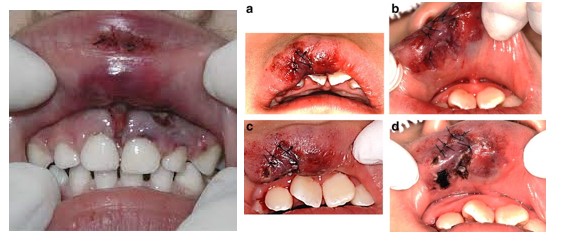
What is an avulsed tooth?
An avulsed tooth is one that has been knocked out.
A tooth can be knocked out by a blow to the mouth, or an accident involving the face. This can happen for example while playing contact sports. The tooth can be replaced in the socket successfully if you take the right action as soon as possible.
How do I stop the bleeding?
Don't panic. Get a clean handkerchief and fold it up, then hold it over the socket and bite down. Keep your jaws together to apply pressure. If you need something for the pain, don't take any medication containing aspirin as this can cause the bleeding to get worse. Do not apply clove oil to the wound.
I've still got the complete tooth, can it be replaced?
Maybe. The complete tooth needs to be replaced in the socket as soon as possible, ideally in under 30 minutes. But teeth have been successfully replaced up to 60 minutes after being knocked out.
What should I do with the tooth?
Don't touch the root. If the tooth is very dirty, rinse it with milk or tap water. Do not clean it with disinfectant or let it dry out.
How do I put the tooth back in?
Hold the tooth by the crown and put it back into the socket firmly, root first. Bite on a clean handkerchief for about 15 to 20 minutes. Visit your dentist as soon as possible.
What should I do if I can't get the tooth back in?
Your tooth has more chance of survival if you keep it in your cheek until you can get emergency dental treatment. This will keep the tooth in its most natural environment. If this is not possible, keep it in some milk.
What if I have only got part of the tooth?
It is not a good idea to try and put the tooth back into the socket if it is not complete. Contact your dental team as soon as possible and they will tell you what can be done to restore the tooth. You may need dental x-rays to see if there is any root damage.
Is there anything I should do if I haven't got the tooth?
If you cannot find the tooth, you may have swallowed it. If you think you may have swallowed or inhaled it, you may need an x-ray to be sure of this.
What if it is a baby tooth?
Most dentists would not recommend putting back a baby tooth in case an infection damaged the adult tooth underneath. Contact your dental team as soon as possible for advice. They may need to examine the child to check if any bits of tooth are still in the gum. There is no way to temporarily replace a baby tooth, so the only treatment is to wait for the adult tooth to appear.
What Should I Do After My Child Experiences a Tooth Fracture?
A chipped or broken tooth is quite common, especially among toddlers just learning to walk or preschool children engaged in vigorous play or sports. It might not even be rough play, but just a chewed piece of ice or biting into a piece of hard candy can ultimately cause some damage. There are many kinds of injuries to the tooth that can occur, from a minor chip to a fracture (a cracked or broken tooth). It might happen to one of their baby teeth or to a permanent adult tooth.
If your child’s tooth gets chipped or broken, whether it’s a baby tooth or a permanent tooth, it is very important to call their pediatric dentist right away and schedule an emergency appointment.
A child’s permanent teeth are not fully developed, so any tooth fracture to a permanent tooth needs immediate attention. The classifications of tooth fractures and common types of treatment are as follows:
Where should I get emergency dental treatment?
It is important to get emergency dental treatment. Contact your dental practice as soon as possible and explain what has happened. You should still be able to contact your dental team for emergency treatment, even if the incident has happened outside normal dental practice hours.
What should happen at my emergency visit?
Your dentist will assess you and may treat any facial injury. However, treatment may be limited if there is any bruising or bleeding. They may take x-rays and will check if the tooth has been re-implanted successfully. You will probably need more appointments for follow-up treatment.Some wounds may need sutures.
What other treatment may I need?
If the tooth has been re-implanted successfully you may not need any other treatment, as long as you keep up your regular check-ups with your dentist. If the tooth becomes loose, it can be ‘splinted’ to the teeth next to it. This means it will be temporarily attached to keep it firm until your dentist can tell whether it has been re-implanted successfully.
If the tooth is lost or doesn't re-implant successfully, it can be replaced at first with a denture. Then, when the socket has healed fully, you can have a bridge or dental implant.
Is there anything that I can do to avoid getting a tooth knocked out?
If you are playing sports, particularly contact sports, you should always wear a mouthguard.
This is a rubber-like cover that fits over your teeth and protects you against a blow to the mouth. Your dental team can have one made for you by taking an impression of your teeth and sending it to a laboratory. The laboratory then makes the mouthguard so that it fits your mouth exactly.
SUMMARY
If an adult tooth is knocked out:
If you can’t replace the tooth yourself:
Root canal treatment (RCT), also known as endodontic therapy, is a dental procedure that cleans out the infected or inflamed pulp (the nerve and blood vessels) from inside a tooth to save it from extraction. The pulp is then filled with a sealant to prevent further infection.
Root canal treatment is necessary when the pulp inside a tooth becomes infected, inflamed, or damaged due to deep cavities, cracked teeth, or injury. Symptoms may include lingering sensitivity to hot or cold, throbbing pain, or even a noticeable pimple on the gums.
Root canal treatment is generally not as painful as many people believe. Modern anesthesia and techniques can minimize discomfort during the procedure, and any post-treatment pain can usually be managed with over-the-counter pain medication.
Yes, root canal treatment is designed to save the natural tooth by removing the infected or inflamed pulp and sealing the tooth to prevent future infection.
Delaying root canal treatment can lead to increased pain, infection, and potentially the need for tooth extraction. In severe cases, untreated infections can spread to the jaw or bloodstream, leading to serious complications.
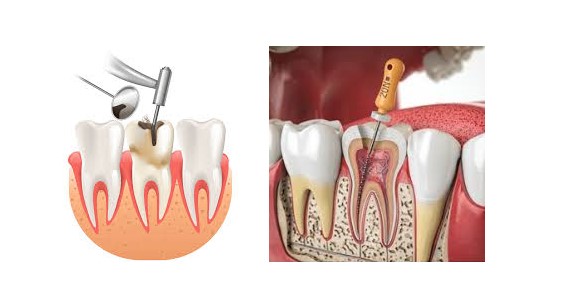
Retreatment after root canals FAQS
Root canal retreatment is a procedure performed to address complications after an initial root canal treatment, such as persistent infection or new decay. It involves removing the existing filling, cleaning and disinfecting the root canal system, and sealing it again to prevent future issues.
1.Why is retreatment necessary?
Root canal retreatment is needed when the initial treatment fails to heal properly, or if the tooth develops new problems like new decay, a cracked or loose restoration, or if bacteria re-enter the root canal. This can happen if there is no cap placed, or the patient doesn’t return for replacement of the temporary filling. It may also be because of an underfilled canal
2.What happens during retreatment?
The dentist will remove the existing filling, thoroughly clean and disinfect the root canal system, and then seal it again with new materials.
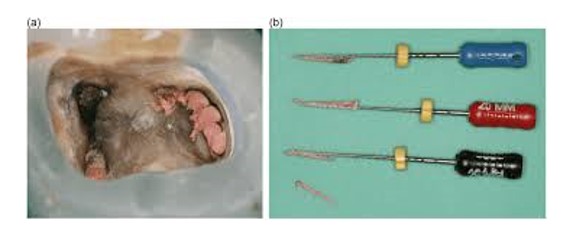
3.What are the risks associated with retreatment?
While generally safe, retreatment can have risks like infection, nerve damage, or over-treatment of the tooth. Choosing an experienced and qualified endodontist can minimize these risks.
4.What is the success rate of retreatment?
Retreatment has a high success rate, but it is generally slightly lower than the initial treatment because it is a more complex procedure. Retreatment is best performed by a specialist endodontist who may choose to use a microscope to view the internal aspect of the tooth clearly.
5.What kind of aftercare is needed after retreatment?
After retreatment, you will need a final restoration (filling or crown) to protect the tooth. Maintaining good oral hygiene practices like brushing and flossing is crucial to prevent future issues.
An apicoectomy is a surgical procedure where a dentist removes the tip of a tooth root (the apex) and any infected tissue surrounding it. It's typically performed when a root canal has failed to eliminate infection or when the tooth has other issues like cysts or fractures.
What are the reasons for an apicoectomy?
The most common reason is when a root canal, even with the correct filling material, fails to eliminate infection.
Even after root canal treatment, inflammation or infection may persist near the root tip.
Apicoectomy can also be used to treat cysts or tumors around the tooth's apex.
If a tooth root fractures, an apicoectomy may be necessary to remove the damaged tissue.
Injuries to the root can also warrant an apicoectomy.
How is an apicoectomy performed?
What to expect after an apicoectomy?
Cost and insurance coverage:
Are there any risks?
Is an apicoectomy painful?
How long does it take to recover?
Can I return to normal activities after the procedure?
How to care for your mouth after an apicoectomy?
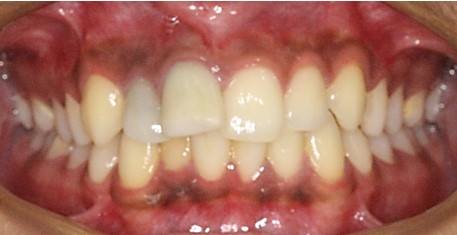
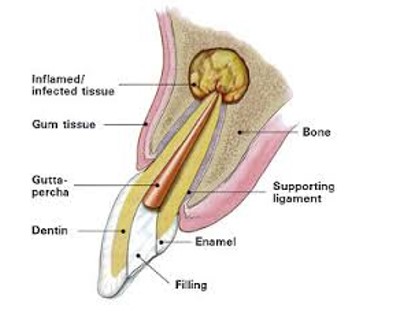

Inlays and onlays are custom-made dental restorations used to replace missing tooth structure due to decay or damage. Inlays fit inside a tooth's cavity, while Onlays cover the entire biting surface and cusps, offering greater support.
What are inlays and Onlays?
These are designed to fit inside a tooth's cavity, replacing lost tooth structure due to decay or damage.
These cover the entire biting surface and cusps of a tooth, providing greater support and durability.
How are inlays and onlays different from fillings?
Fillings are used for smaller cavities and are typically placed directly into the tooth.
These are custom-made in a dental lab and are cemented into place, providing a stronger, more durable restoration than a filling.
What materials are inlays and onlays made from?
How long do inlays and onlays last?
How do I care for inlays and onlays?
How much do inlays and onlays cost?
Is insurance coverage available?
What are the benefits of inlays and onlays?
Are inlays and onlays painful?
What is the inlay/onlay procedure?
Preparation: The dentist numbs the area and removes decay.
Impression or scan : An impression or scan of the prepared tooth is made.
Lab work: The inlay/onlay is custom-made by a dental lab.
Placement: The dentist cements the custom made restoration into place.
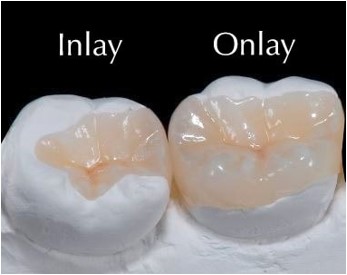
Dental crowns are caps placed over damaged or weakened teeth to restore their shape, size, and strength. They come in various materials, including ceramic, gold, metal alloy, or porcelain fused to metal. Crowns can last anywhere from 5-15 years or even longer with good oral hygiene and care.

Why do I need a crown?
What are crowns made of?
How long do crowns last?
How do I care for my crown?
Will the crown be noticeable?
How painful is getting a crown?
Can I get a crown in one day?
What if my crown breaks or falls out?
Do teeth need special care after getting a crown?
What can cause dental crowns to yellow?
Why might teeth protected with dental crowns sometimes rot?
Do crowns have a warranty like other electronics and gadgets that we use?
Crowns typically last atleast 5-15 years with good maintenance. Yes, many dental laboratories offer warranties on dental crowns, typically ranging from 5 to 15 years. These warranties often cover one free repair or replacement within the warranty period if issues arise from the crown itself or its fit, but not typically from accidental damage or poor oral hygiene. After one repair or replacement , the warranty is null and void. Oral hygiene, habits, and overall oral health can influence the longevity of a crown. Replacement and repair required the original warranty card and receipt to be produced.
Tooth Buddies delivers quality dentistry with a personalized touch. Each patient is treated with the utmost care, compassion, empathy.
Copyright © 2025 All Rights Reserved.